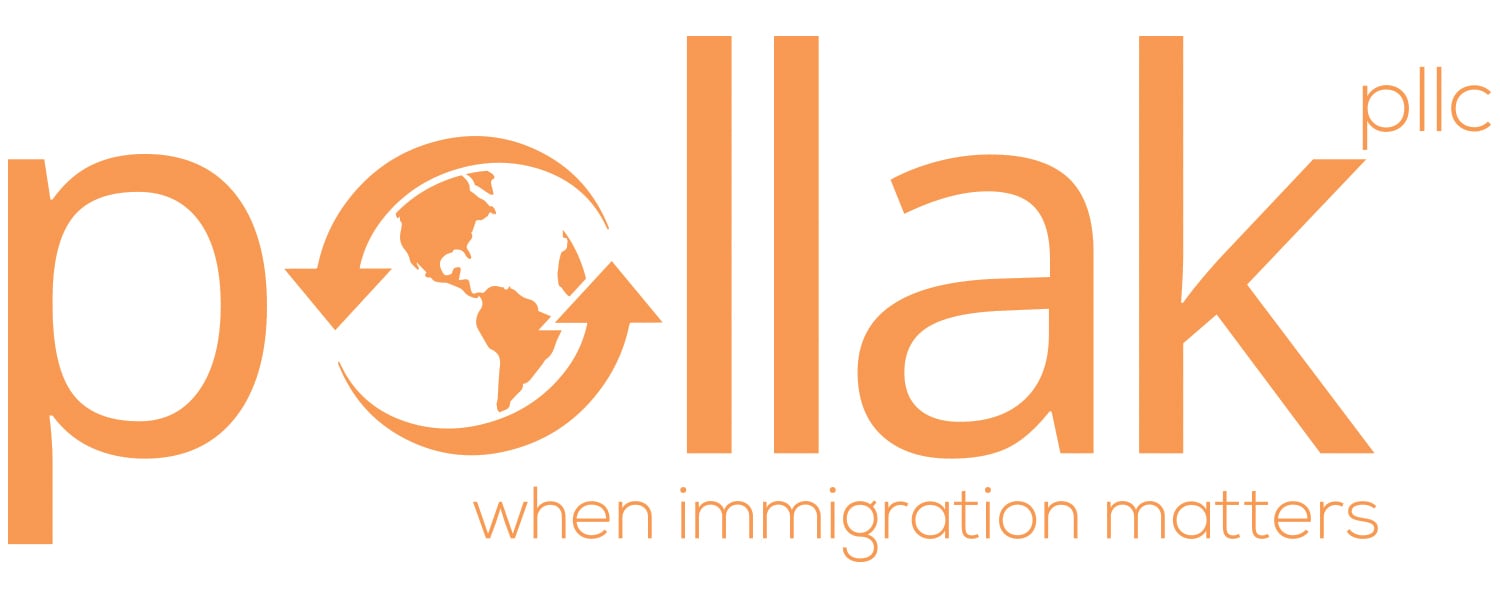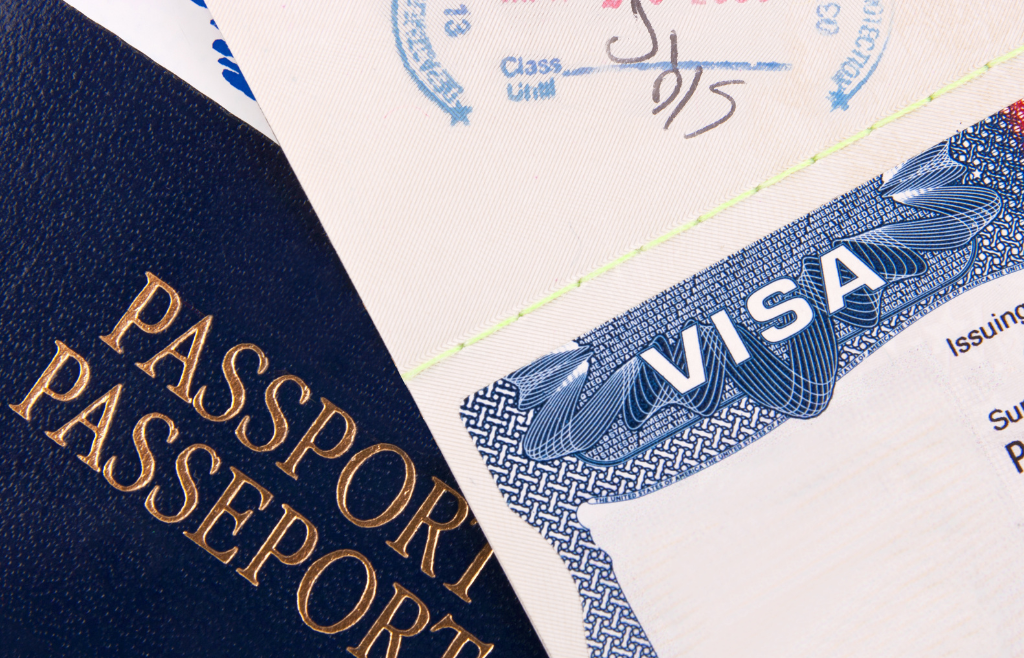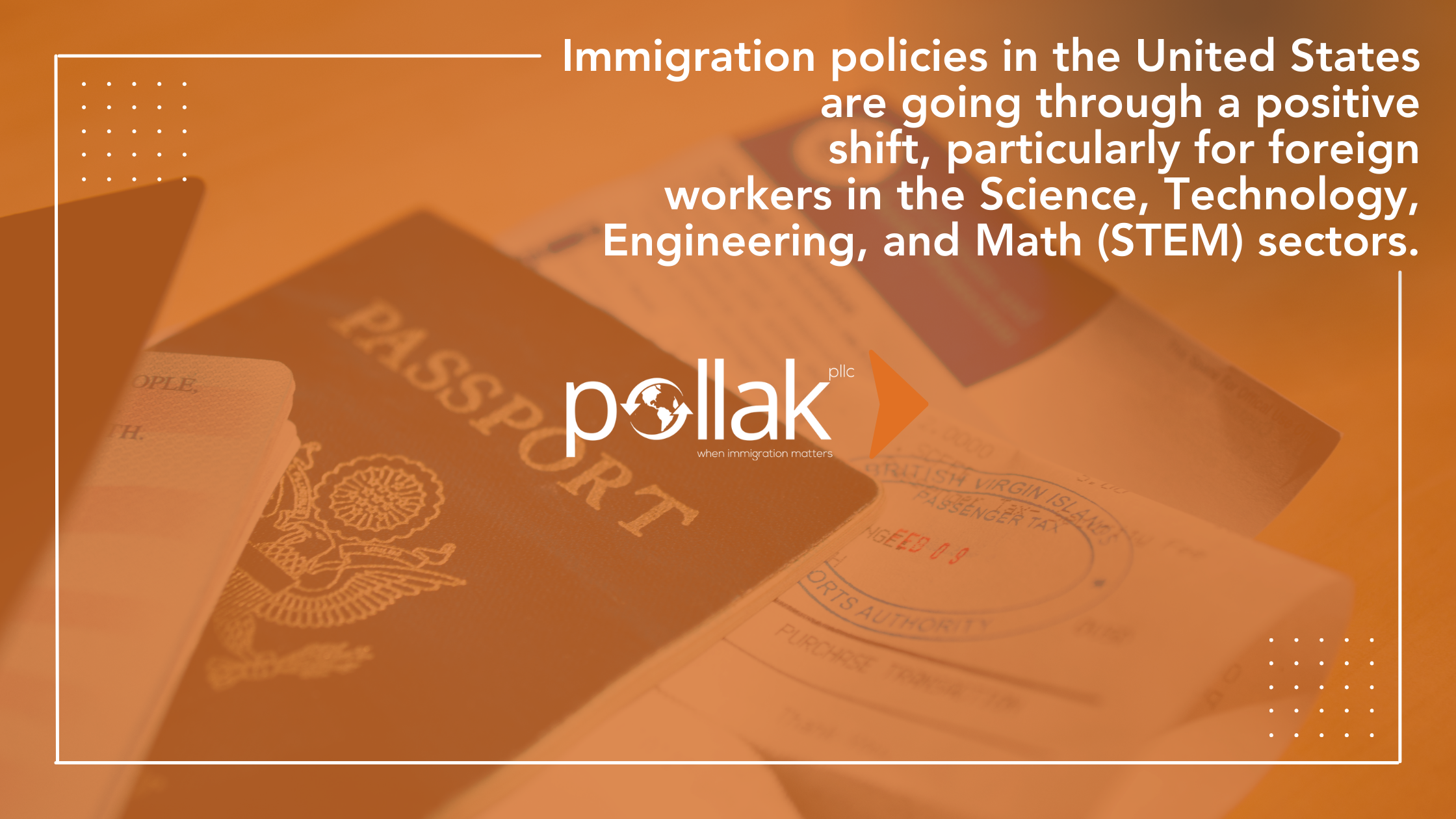-2.png?width=2240&height=1260&name=Pollak%20Blog%20Designs%20(2)-2.png)
The journey from an international student to a working professional in the United States embodies the aspirations and hard work of countless individuals from around the globe. The F-1 student visa program serves as a gateway for ambitious students to immerse themselves in the educational excellence of U.S. institutions.
After completing academic programs, many students are poised to bring their newfound knowledge and skills to the U.S. workforce. The shift from holding an F-1 visa to embracing the professional world under an H-1B visa is a testament to their dedication and the opportunities afforded by the U.S. immigration system.
Utilizing Existing Programs to Get Your Foot in the Door
The F-1 visa program is a pathway for international students to pursue academic studies in the United States. This visa category is for non-immigrant students enrolled in a full course of academic study at accredited U.S. colleges, universities, seminaries, conservatories, elementary schools, high schools, or language training programs.
The F-1 visa is more than just a permit to study; it's a bridge to cultural exchange and academic excellence, offering students a chance to immerse themselves in American culture while contributing to the global community through their academic and eventual professional pursuits.
Transitioning to H-1B Visa Status
The H-1B visa program is a critical pathway for former F-1 visa holders seeking to work in specialized fields within the United States. Unlike the Optional Practical Training (OPT) program, which allows for temporary employment directly related to a student's major area of study, the H-1B visa offers a more long-term opportunity for employment in specialized occupations. To be eligible for an H-1B visa, candidates must have a job offer from a U.S. employer for a position that necessitates applying specialized knowledge, typically requiring at least a bachelor’s degree in the relevant field.
The process for obtaining an H-1B visa involves several key steps. Firstly, the prospective employer must file a Labor Condition Application (LCA) with the Department of Labor (DOL), attesting to several critical labor conditions. This includes the commitment to pay the prevailing wage for the occupation in the area of employment and ensuring that hiring a foreign worker will not adversely affect the working conditions of similarly employed U.S. workers.
The Competitive Nature of H-1B Visa Applications
The H-1B visa is subject to an annual cap, with 65,000 visas available for individuals holding bachelor’s degrees and an additional 20,000 visas for those with master’s degrees or higher from U.S. institutions. This cap has led to a highly competitive selection process, with the number of applications often exceeding the available visas within days of the opening of the filing period on April 1 each year. Upon approval, the H-1B visa allows for an initial stay of up to three years, which can be extended. This visa category also opens the door to applying for permanent residency in the future, offering a bridge to long-term employment and the possibility of settling in the U.S.
Getting Your H-1B Visa with Pollak PLLC
The transition from an F-1 student visa to an H-1B work visa marks a significant milestone in the lives of international students aspiring to establish their careers in the United States. Professional guidance is invaluable to ensure a smooth and informed transition. At Pollak PLLC, we are equipped to assist you through every step of this important journey, helping to align your career aspirations with the opportunities available in the U.S. For personalized advice and assistance, call (214) 305-2266. Let us help you navigate this significant transition with confidence and clarity.

-2-1.png)


